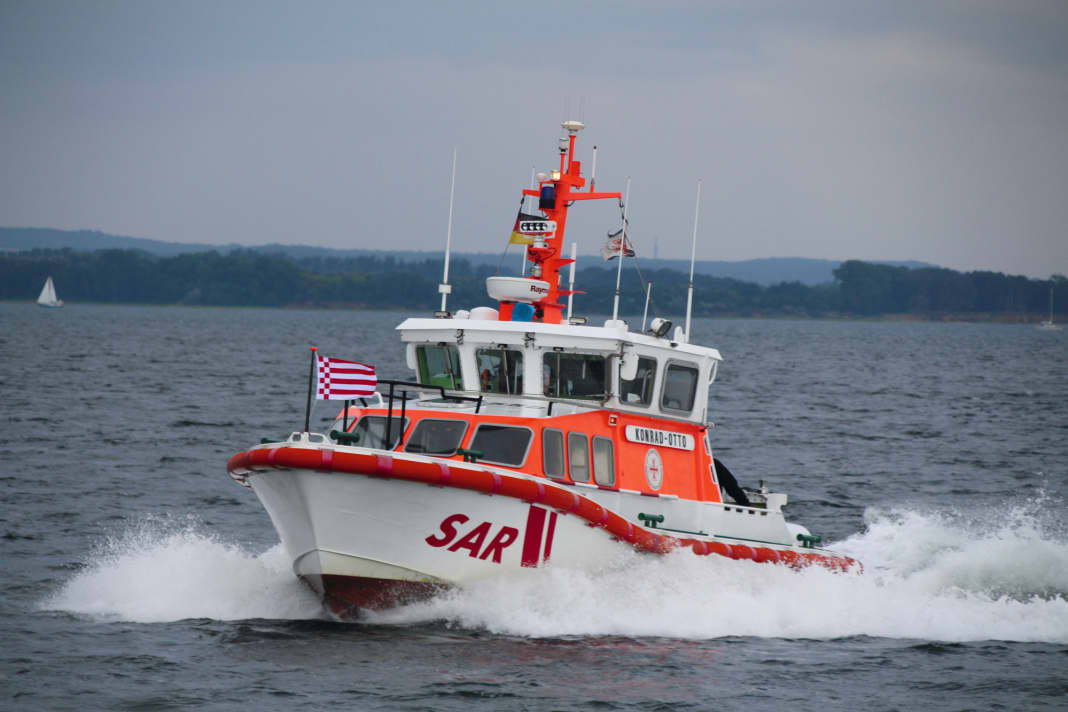



Sea rescue boat "Konrad Otto"
The sea rescuers often don't know what to expect on site or where exactly they need to go. They often have to search before they can rescue. In international parlance, their task is known as the SAR service. SAR stands for Search and Rescue. And sometimes their mission is like the proverbial search for a needle in a haystack. As was the case on 11 November 2014, when two anglers lost their bearings in the fog on the Baltic Sea in their open, unmanoeuvrable boat. The two older men have been taking their small boat out fishing off the Fischland/Darß peninsula for many years. But today everything seems to have conspired against them. First the engine fails, then a dangerous sea fog sets in. Although the engine starts again after a few attempts, the anglers are unable to approach the coast again. Finally, the fuel is exhausted. The men are disorientated and their boat is rudderless. When they make the distress call, they do not know their exact position.
What they can tell the sea rescuers is that they are in an area with a water depth of around 20 metres and have seen two ferries crossing. The rescue coordination centre is alerted: Due to prevailing south-south-easterly winds with speeds of 15 to 20 knots and the current conditions, the two must already be close to the narrow and heavily travelled Kadet Channel between Germany and Denmark. They are in danger of drifting their boat into the shipping lane - with visibility of less than 200 metres. And it will soon be dark. The rescue control centre calculates two search areas and coordinates the rescue units on site, which set off from the Darßer Ort, Warnemünde, Wustrow and Kühlungsborn stations. Due to the dense fog, the use of helicopters to support the search is not possible. It is already dark when the rescue cruiser "Arkona" discovers the shipwrecked vessel about twelve nautical miles off Kühlungsborn after a radar echo. She illuminates the scene. "We had been sitting huddled in our boat for hours, wrapped up in our clothes as best we could, when it suddenly became light all around us. That's when we knew: We're safe now," one of the anglers later recalled.
The volunteer crew of the rescue boat "Konrad Otto" takes the two men on board while the "Arkona" tows the shipwrecked vessel to a safe harbour. Skipper Christoph Müller later reports: "They didn't want to believe that we were the lifeboat from Kühlungsborn, because they thought we were still east of Warnemünde." Time and again, even experienced skippers realise how quickly you can lose your bearings out there.
Sea rescue boats "Neuharlingersiel"/ "Courage"
This happens particularly quickly in the area where the Neuharlingersiel sea rescuers operate. Many North Sea holidaymakers underestimate the dangers posed by the mudflats. Thunderstorms, fog, mud and mussel fields and constantly changing and rapidly filling tidal flats - a mudflat hike without an experienced guide can be life-threatening. Whitsun 2008 saw a dramatic rescue operation by the crew of the "Neuharlingersiel" off Neuharlingersiel. At the last minute, the crew rescued five children from the rising tides.
Just minutes before, the girls, aged between ten and 14, had been enjoying the pre-summer weather and collecting shells when suddenly and surprisingly quickly the high tide comes in and a priel blocks their way back. Fortunately for them, a relative on the beach recognises the seriousness of the situation and alerts the police, who immediately forward the emergency call to the DGzRS Maritime Rescue Coordination Centre. Less than five minutes later, the rescue boat "Neuharlingersiel" leaves the harbour. When the crew led by foreman Wolfgang Gruben and rescuer Peter Henning arrive on the scene, the girls are already up to their necks in water and can barely hold on in the current. They cling desperately to a fairway buoy. The sharp-edged barnacles are cutting their skin. The sea rescuers pull the hypothermic and shocked children on board through the rescue gate and hand them over to their relieved parents on land.
15 years later: The "Courage", the youngest of the 9.5/10.1 m sea rescue boats, has just been put into service in Neuharlingersiel when an emergency call comes in on Sunday evening, 18 June 2023. Their first mission: a group of mudflat hikers are stuck between Spiekeroog and the mainland. A tidewater is blocking the way back for the three adults, a small child and a dog. They are quickly located using GPS data from a mobile phone. The crew of the "Courage" is on the scene within minutes and brings them safely ashore. At the request of the donors, the name of the latest sea rescue boat is a tribute to the volunteer sea rescuers who have been courageously and selflessly working to save people in distress at sea for almost 160 years.
Here you can find the other two parts of the sea rescue report:
Further information: www.seenotretter.de

